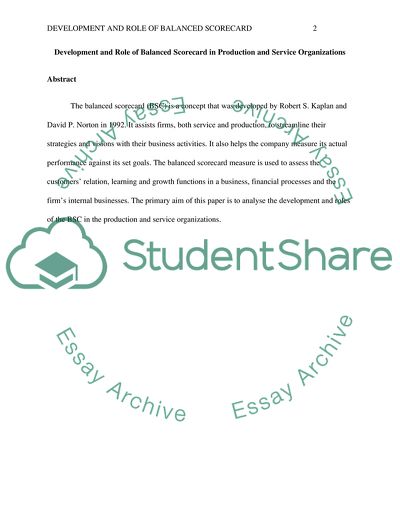Cite this document
(Critical evaluation of development and role of Balanced Scorecard in Essay - 1, n.d.)
Critical evaluation of development and role of Balanced Scorecard in Essay - 1. https://studentshare.org/finance-accounting/1847619-critical-evaluation-of-development-and-role-of-balanced-scorecard-in-production-and-service-organizations
Critical evaluation of development and role of Balanced Scorecard in Essay - 1. https://studentshare.org/finance-accounting/1847619-critical-evaluation-of-development-and-role-of-balanced-scorecard-in-production-and-service-organizations
(Critical Evaluation of Development and Role of Balanced Scorecard in Essay - 1)
Critical Evaluation of Development and Role of Balanced Scorecard in Essay - 1. https://studentshare.org/finance-accounting/1847619-critical-evaluation-of-development-and-role-of-balanced-scorecard-in-production-and-service-organizations.
Critical Evaluation of Development and Role of Balanced Scorecard in Essay - 1. https://studentshare.org/finance-accounting/1847619-critical-evaluation-of-development-and-role-of-balanced-scorecard-in-production-and-service-organizations.
“Critical Evaluation of Development and Role of Balanced Scorecard in Essay - 1”. https://studentshare.org/finance-accounting/1847619-critical-evaluation-of-development-and-role-of-balanced-scorecard-in-production-and-service-organizations.


